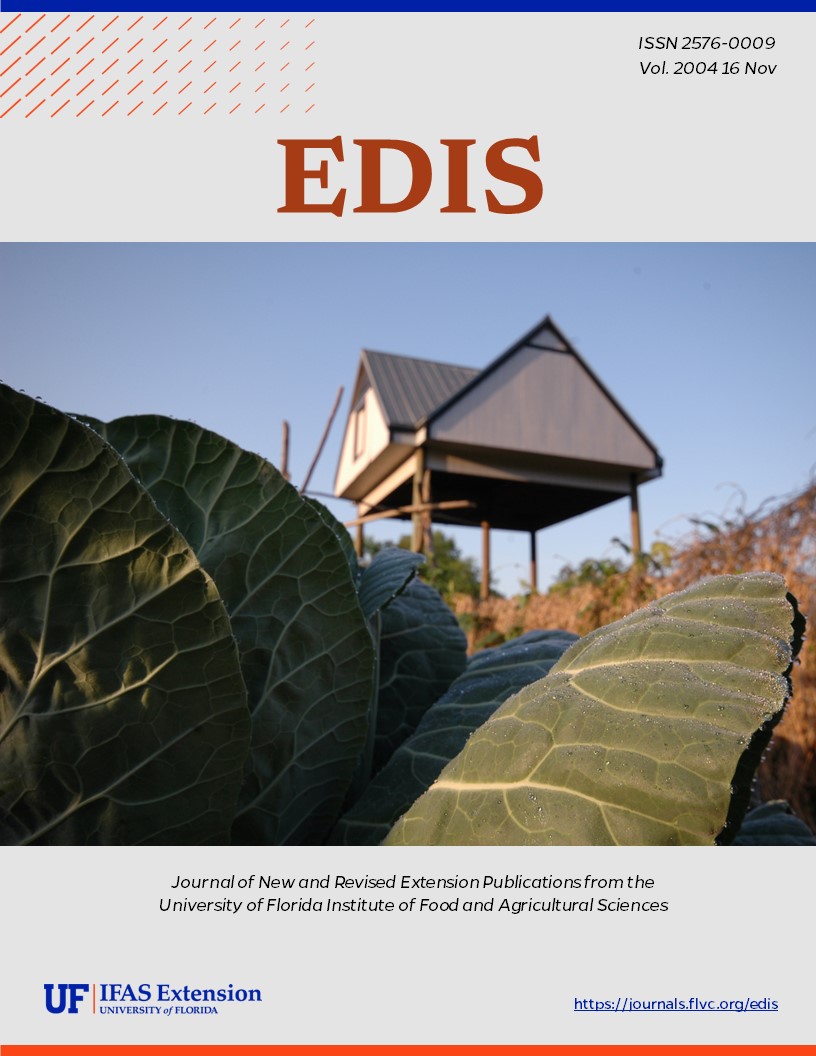Abstract
The white-footed ant, Technomyrmex albipes (Fr. Smith) has been making news in Florida over the last
few years as a pest ant of major importance. Pest control companies, the media and homeowners continually consult universities and government agencies for information on how to control this nuisance ant. This report provides recent information (August 2002) on the distribution and habits of the white-footed ant (WFA) in Florida and the research being conducted on improved control practices. This document is EENY-273, one of a series of Featured Creatures from the Entomology and Nematology Department, Florida Cooperative Extension Service, Institute of Food and Agricultural Sciences, University of Florida. Published: August 2002.
References
Charles JG. 1993. A survey of mealybugs and their natural enemies in horticultural crops in North Island, New Zealand, with implications for biological control. Biocontrol Science and Technology 3: 405-418. https://doi.org/10.1080/09583159309355295
Deyrup M. 1991. Technomyrmex albipes, a new exotic ant in Florida (Hymenoptera: Formicidae). Florida Entomologist 74: 147-148. https://doi.org/10.2307/3495251
Samways MJ, Nel M, Prins AJ. 1982. Ants (Hymenoptera: Formicidae) foraging in citrus trees and attending honeydew-producing Homoptera. Phytophylactica 14: 155-157.
Smith F. 1861. Catalogue of hymenopterous insects collected by Mr. A.R. Wallace in the Islands of Ceram, Celebes, Ternate, and Gilolo. Journal of the Proceedings of the Linnean Society, Zoology 6: 36-48. https://doi.org/10.1111/j.1096-3642.1861.tb00927.x
Sulaiman SFM. 1997. Impact of weed management on ant density and fruit yield in the control of pineapple wilt disease. Acta horticulturae 425: 475-484. https://doi.org/10.17660/ActaHortic.1997.425.51
Tsuji K, Yamauchi K. 1994. Colony level sex allocation in a polygynous and polydomous ant. Behavioral Ecology and Sociobology 34: 157-167. https://doi.org/10.1007/s002650050029
Way MJ. 1989. Ants (Hymenoptera: Formicidae) as egg predators of coconut pests, especially in relation to biological control of the coconut caterpillar, Opisina arenosella Walker (Lepidoptera: Xyloryctidae), in Sri Lanka. Bulletin of Entomological Research 79: 219-233. https://doi.org/10.1017/S0007485300018204
Yamauchi KT, Furukawa T, Kinomura K, Takamine H, Tsuji K. 1991. Secondary polygyny by inbred wingless sexuals in the dolichoderine ant Technomyrmex albipes. Behavioral Ecology and Sociobology 29: 313- 319. https://doi.org/10.1007/BF00165955
Unless otherwise specified, articles published in the EDIS journal after January 1, 2024 are licensed under a Creative Commons Attribution-NonCommercial-NoDerivs 4.0 International (CC BY-NC-ND 4.0) license.

